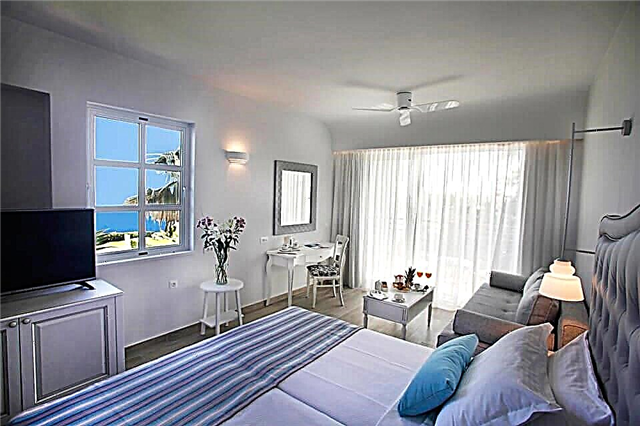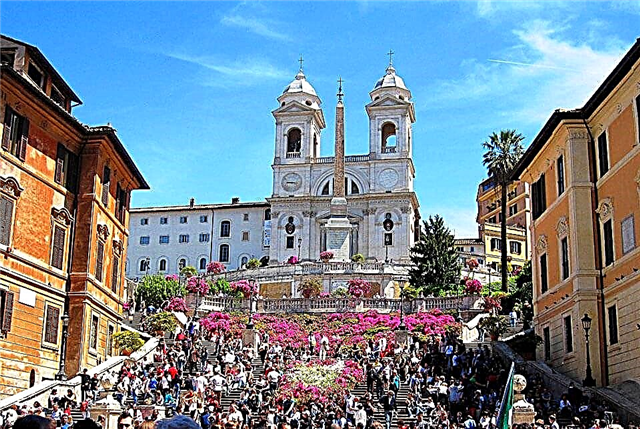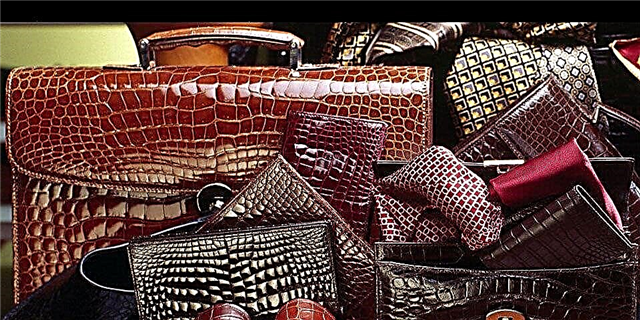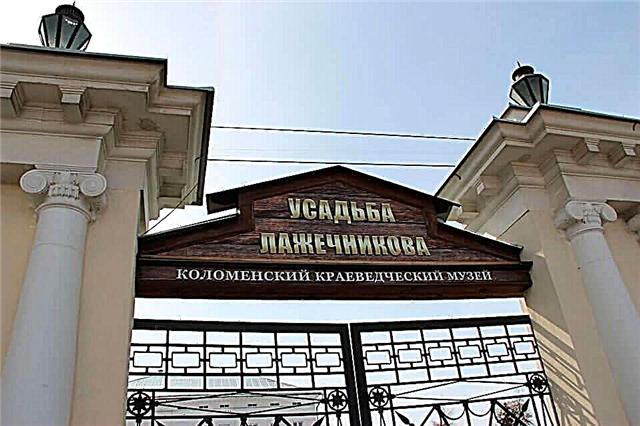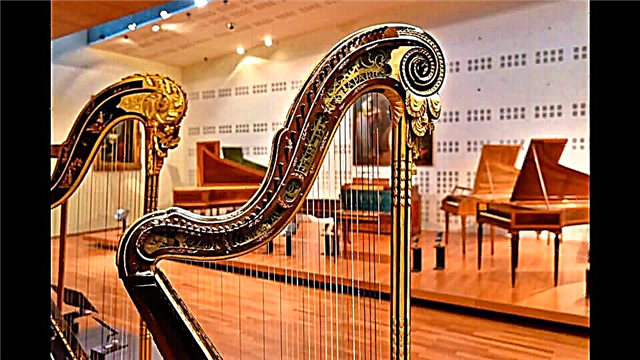In Quebec, you can still stumble upon real fortress walls and stroll along the "European" streets of the Old City, which were inhabited in the 17th century. Despite the fact that the city was conquered by the British, its French roots have not disappeared - they continue to influence the lives of the townspeople to this day.
It is known that Quebec is not located in the warmest climatic zone, but people have learned to take advantage of this position. They organized a fun Winter Carnival, and every year they build an ice hotel, where a long line of tourists lined up in advance. Moreover, Quebec is surrounded by unique nature. Not far from the city is the imposing Montmorency Falls and the magnificent Jacques-Cartier Park.

The best hotels and hotels at affordable prices.
from 500 rubles / day
What to see and where to go in Quebec?
The most interesting and beautiful places for walking. Photos and a short description.
Castle hotel Chateau Frontenac
The Quebec hotel Château Frontenac, located on Cape Diamant, has become world famous for its unusual architecture. From a distance, it seems as if this is a real medieval castle with bastions, towers and powerful walls. The building was built at the end of the 19th century on the site of the former residence of the governors from the metropolis. As befits a castle, the structure is located on a hill and dominates the rest of the building.

Old Quebec
Historic center of Quebec, which is a UNESCO protected monument. The first buildings in Old Quebec date from the beginning of the 17th century, but most of the buildings appeared in the 19th century. The area resembles a typical French quarter of the Old World, on its territory there are cathedrals, historic mansions, fortifications, completely unique in North America.

Royal square
The square is a picturesque piece of Europe, as if transported to the North American continent. It is covered with hundred-year-old cobblestones, narrow stone streets diverge in all directions from it, restaurants are open for tourists on the first floors of old mansions. The square is adorned with the graceful building of the Church of Notre Dame de Victoire, which was erected in 1690. This is one of the oldest temples in the New World.

Old port of Quebec
The harbor is the second largest after the port of Montreal. In the 19th century, she played an important role in commercial shipping in Canada, hundreds of ships passed through the port every day. With the construction of a more modern harbor, cruise ships began to dock in the Old Port, and it became a popular tourist attraction. The harbor offers a magnificent view of the Château Frontenac.

Quebec fortress
The defensive structures at Cape Diamant, built in the shape of a star. They were built until the middle of the 19th century. On the territory of the Quebec Fortress, there is still a military base and the residence of the Governor-General. The English monarch will also stay here in case of his visit to Quebec. By the end of the 19th century, the fort lost its military significance; an artillery school was opened on its territory.

Fortress walls
The fortress wall was erected in the middle of the 18th century, this is the only structure of its kind in North America, since the rest have not survived to this day. In 1985, the remains of the walls were declared a UNESCO monument, which prevented demolition attempts. The fortress wall gives Quebec an original historical look and reminds of the times of the British and French confrontation.

Houses of Parliament
The building is located on Parliament Hill. It was built according to the project of E.-E. Tache in the second half of the 19th century. The architecture of the building clearly demonstrates the imperial ambitions that were prevalent in Britain at that time. The facade is made in a pompous style; a lot of expensive wood, marble and decor with an abundance of gilding were used for the interior decoration.

Train Station
The station building is a picturesque monument of architecture in the French style. The building is built of red brick, the facade is distinguished by the presence of a large number of elegant stained-glass windows. A sloping roof, two towers at the main entrance and a clock face create a resemblance to a European castle or Old World town hall. The station is not designed for a large number of passengers; in the evenings, there are few trains.

National Museum of Fine Arts
The museum was founded in 1933. It is located in the historical part of the city and consists of three buildings. Until 1970, one of the pavilions housed a prison. The interior of some of the prison premises was left unchanged and included in the historical exhibition. The museum collection numbers about 38 thousand items, including many sculptures, paintings, photographs, and objects of applied art.

Museum of Civilization
The museum was opened in 1988, since then it has won the title of the largest in Canada. The museum funds contain about 1 million exhibits, covering a long time period. Three permanent exhibitions dedicated to the history of the province of Quebec, the indigenous population of Canada and the history of the city itself are open to visitors. Temporary exhibitions are organized periodically.

Morrin Center
The former city prison, which has been turned into a cultural center. Now the building houses a scientific laboratory and a library. There used to be a college here. The Morrin Center Book Collection is considered the oldest and one of the most respected in Canada. For tourists, 30-40 minute excursions are organized, during which the guide will tell a lot about the history of the building.

Quebec fresco
A huge street painting painted on the wall of a building located on Rue Notre Dame. The mural was created in 1999. It depicts historical characters who played an important role in the fate of the city and the province, as well as the architectural landmarks of Quebec - Chateau Frontenac and the city mansions of the Old City. The image is applied in detail and accurately, therefore, during the inspection of the fresco, the effect of "revived reality" is created.

Quebec Aquarium
Urban Oceanarium, formed on the basis of a biological research center. Since 1959, the center has been open to general visitors so that they can get to know the marine fauna better. Since 1971, scientists have moved to another location, and a public aquarium has remained on the old one. The aquarium is inhabited by about 300 species of marine inhabitants (10 thousand individuals). Seals, polar bears and walruses also live here.

Cathedral of Notre Dame de Quebec
Quebec Cathedral Catholic Cathedral, one of the oldest temples in Canada. The first building on the site of the modern cathedral appeared in the middle of the 17th century, but 100 years later it was destroyed during the siege. The building was reconstructed in 1744-49. designed by J. Billarger. The architect also worked on the interior of the temple. Since 1989, the building of the cathedral is considered a historical monument of Canada.

Basilica of Sainte-Anne-de-Beaupre
Catholic temple built in 1658. The first building stood until the fire of 1922. Several years later, the basilica was rebuilt. Miracles are believed to take place in this temple. People with damaged limbs are healed by getting out of wheelchairs or throwing away crutches. There are even special stands in front of the entrance to the church, where all kinds of canes, sticks, crutches that were thrown away by the former owners are kept.

Funicular in Old Quebec
The funicular connects the historic part of Quebec with the Museum of Civilizations. The system started working in 1879. Since then, there have been three major repairs - in 1946, 1978 and 1998.The length of the cable car reaches 64 meters, the lifting height is 59 meters. In 1996, there was an accident that resulted in the death of a person. After that, the funicular was closed for 2 years. It started working again only after a major overhaul.

Quebec bridge
The bridge spans across the St. Lawrence River in the southwestern part of the city at the beginning of the 20th century. It is open for railway, automobile and pedestrian traffic. In length, the structure reaches almost 1 km., Width - 29 meters, maximum height above water - 104 meters. Since 1993, the Quebec Bridge has been considered an important historical monument and is under the jurisdiction of government agencies.

Rue Petit-Champlain
Historic street located in Old Quebec. It is famous for the fact that here in the 80s. French artisans settled in the 17th century. In the 19th century, the Irish were added to them. Petit-Champlain had become dilapidated by the 20th century, but it has completely retained its unique appearance. The former residential buildings have been converted into shops and restaurants. The street can be reached by walking along the Dangerous Stairs.

Samuel de Champlain
A picturesque street along the well-groomed promenade, a popular stroll. The promenade is named after S. de. Champlain, a famous French traveler and founder of Quebec. The promenade is decorated in a modern dynamic style with an abundance of wooden platforms, geometric lawns and a stone embankment near the water, which creates the effect of a rocky shore.

Fields of Abraham
Historic site of the battle of French and British troops in 1759. As a result of this battle, Quebec was ceded to Great Britain. In those distant times, the Fields of Abram were outside the city limits, now they are part of the historical part of Quebec. On the site of the former battle, a park was laid out and a small museum was built, where you can learn more about the war for Quebec. There are several concert venues in the park where performances take place.

Orleans island
An island with an area of 120 km², discovered in 1535 by J. Cartier. From the second half of the 17th century, some French settlers began to move to the island, who founded a small village there. In 1759, on the eve of the British attack, all residents fled to the mainland. Subsequently, their homes were destroyed. At the moment, several thousand people live on the island, mainly they are engaged in agriculture.

Jacques-Cartier National Park
The park is located a few tens of kilometers from Quebec, it is named after J. Cartier - the discoverer and navigator, thanks to whom Canada was colonized. There are many cycling, skiing, hiking and boating trails in the park. In terms of natural conditions, it is somewhat reminiscent of the Russian North-West region, since it lies in the same climatic zone.

Montmorency Falls
The picturesque and powerful Montmorency Falls as much as 30 meters higher than the world famous Niagara (water jets rush down from a height of 84 meters). The people of Quebec are extremely proud of this fact. The waterfall is located in close proximity to the city, equipped with a network of walking paths and stairs, so that it can be viewed from almost any angle. The stream was named after A. de Montmorency, admiral and viceroy of New France.

Ice hotel in Quebec
A unique hotel built entirely of ice. This is a real hotel with rooms, a bar and a spa. The only difference is that it needs to be rebuilt every winter, since during the summer period the walls and furnishings melt. The hotel is constantly changing its location. The hotel always has a different number of rooms. In order not to freeze, people sleep on special mattresses and pillows, wrapped in sleeping bags.

Quebec Winter Carnival
The holiday, which is held annually at the end of January and lasts two and a half weeks. Tourists from all over the world come to the carnival. The program includes more than 300 different events - the creation of sculptures from ice and snow, parades, races on children's cars, snowboarding and much more. The Quebec Carnival is a real celebration that shows that you can enjoy winter weather too.



